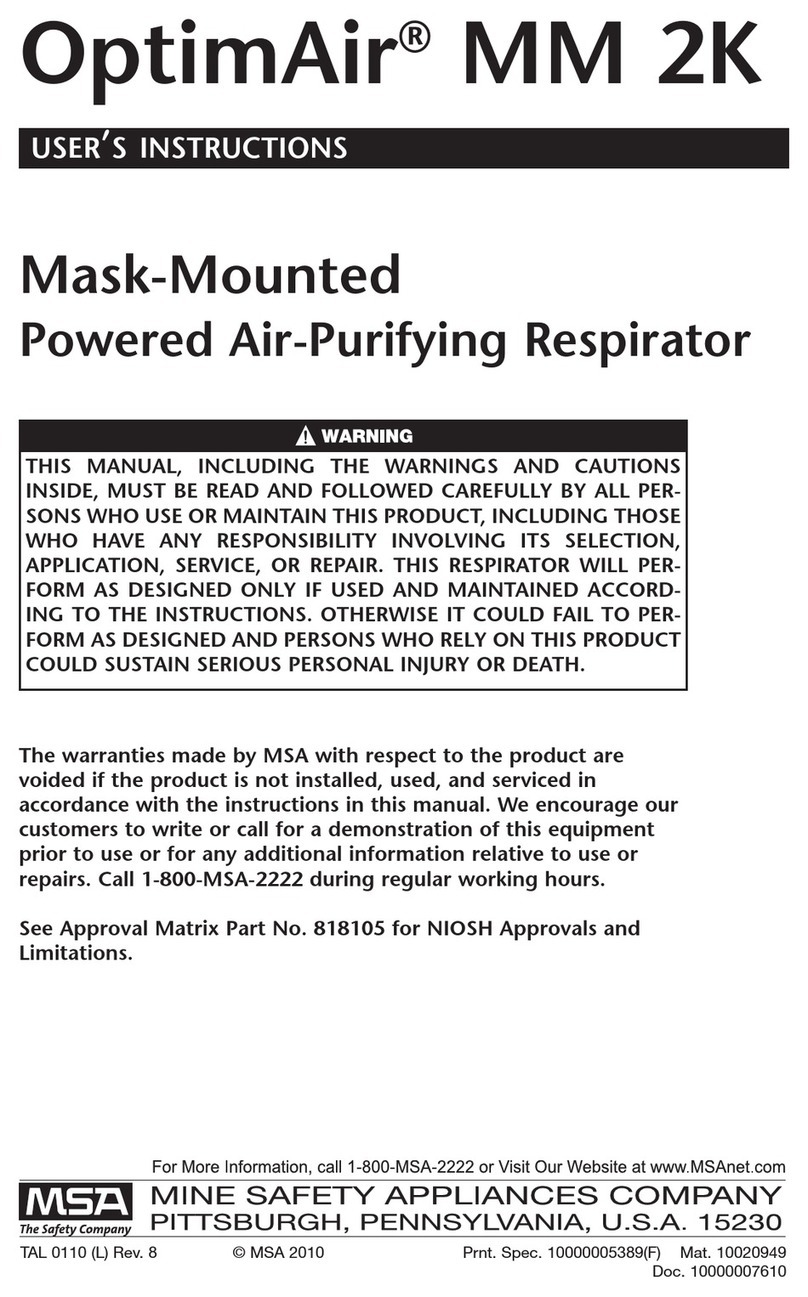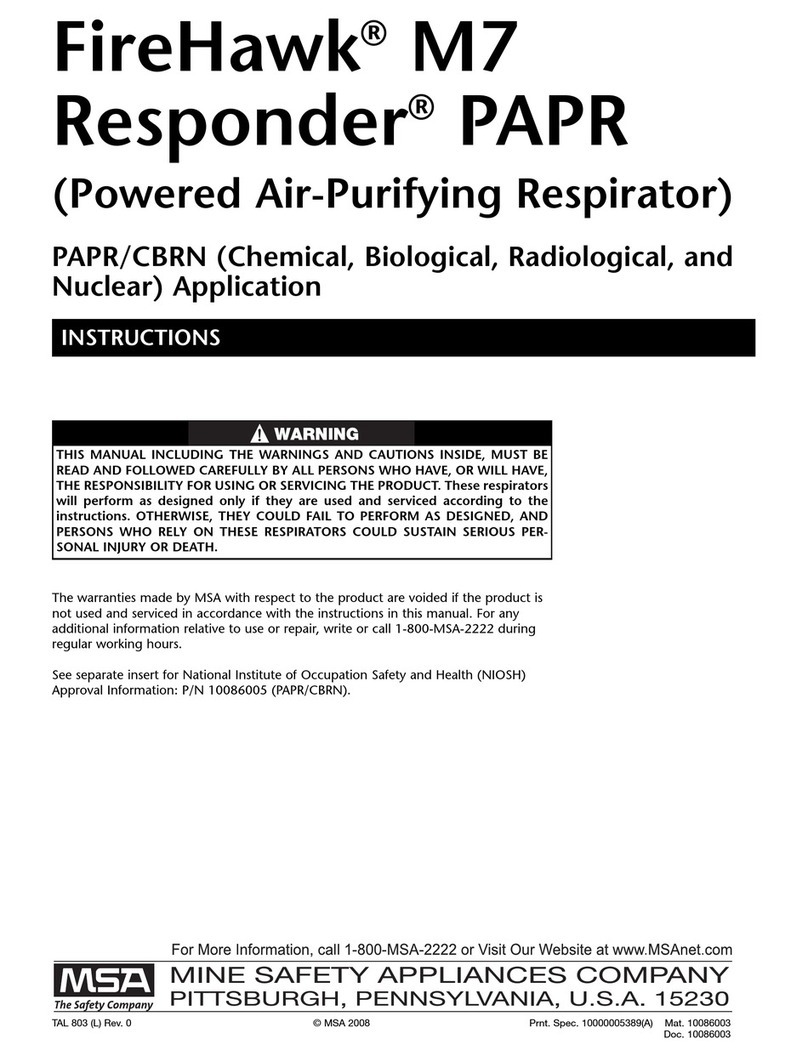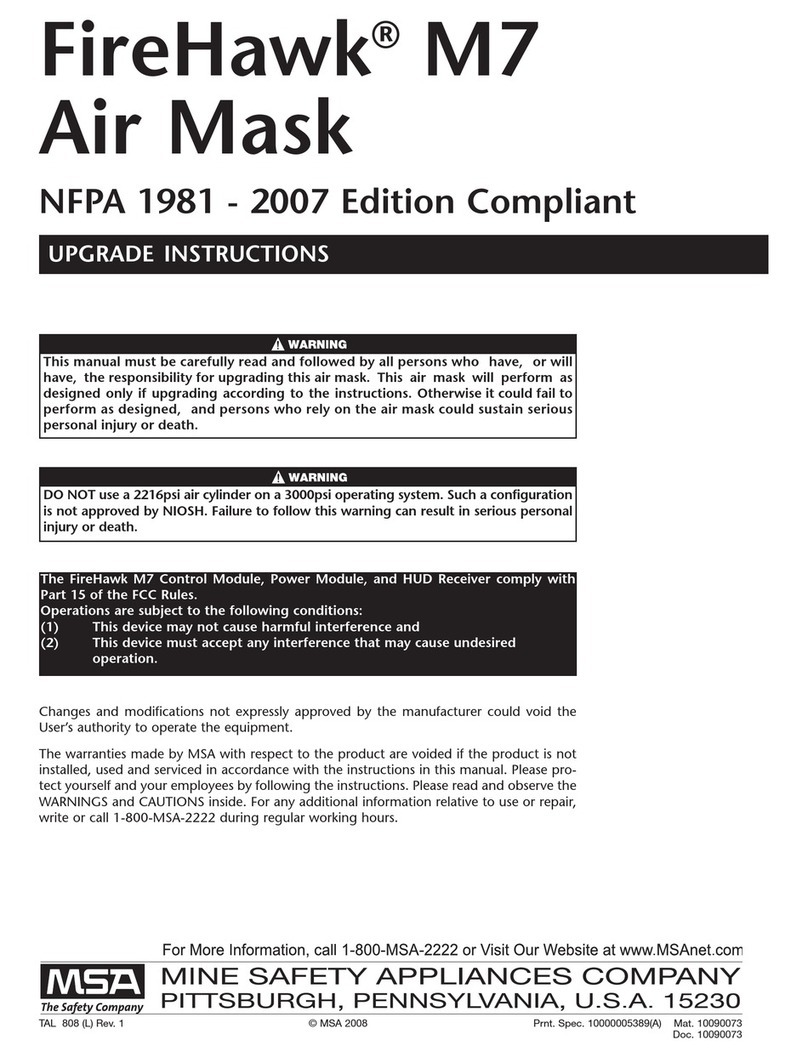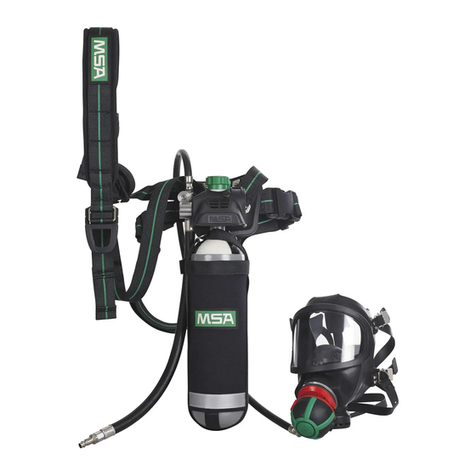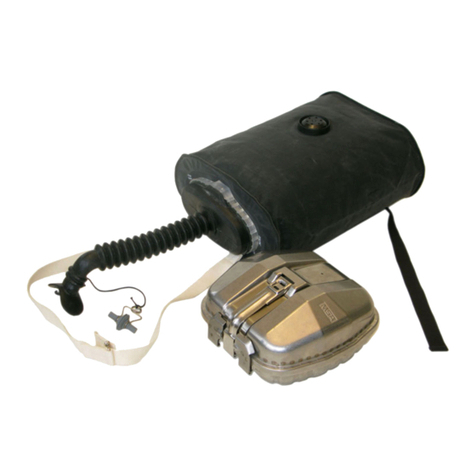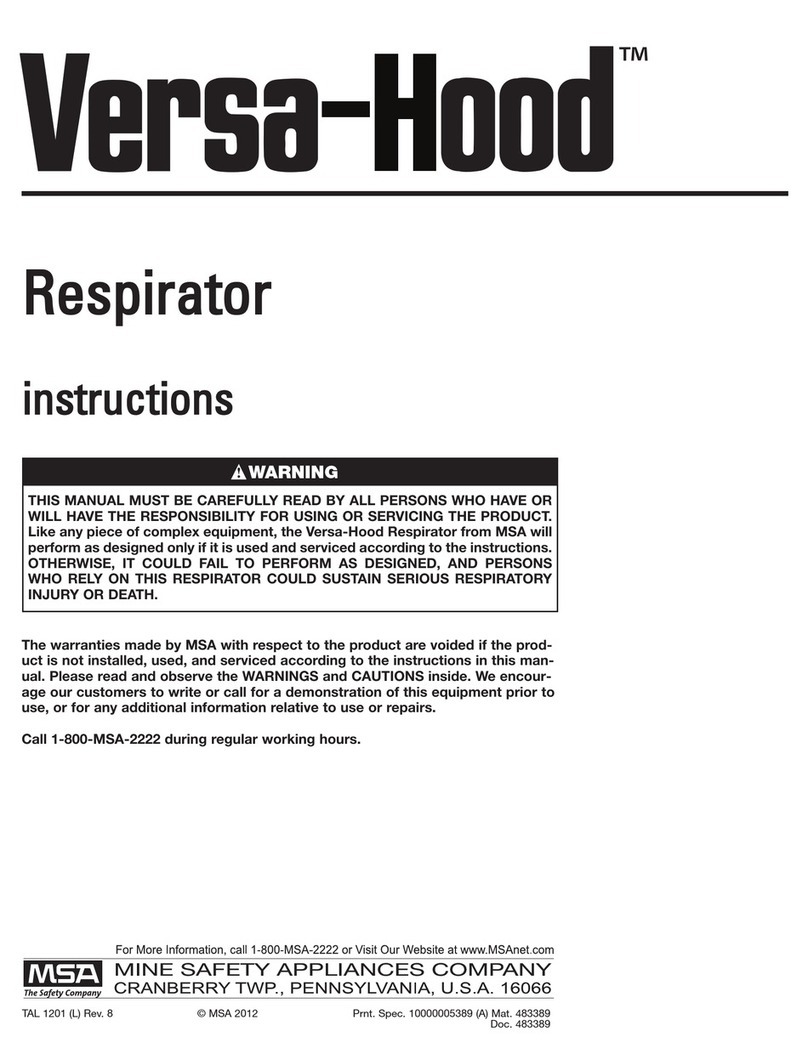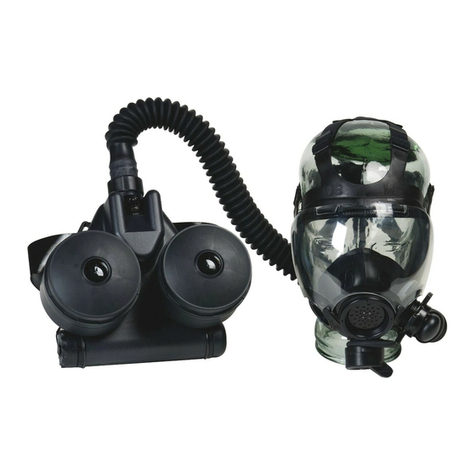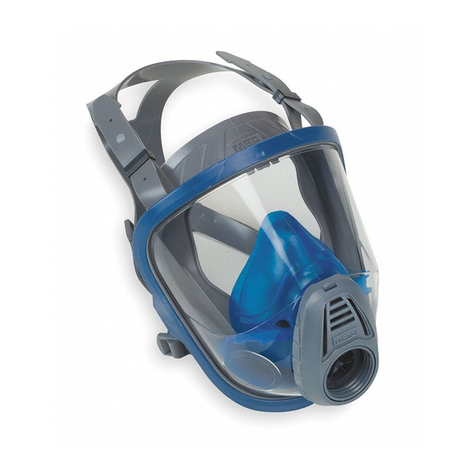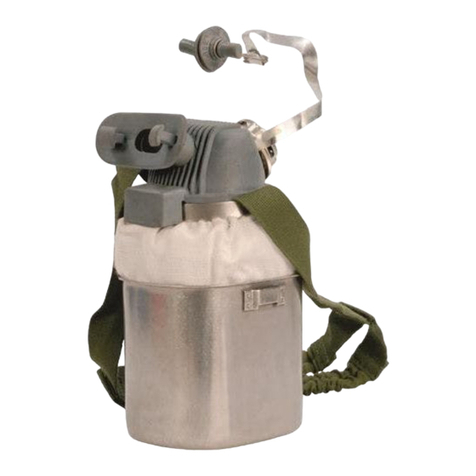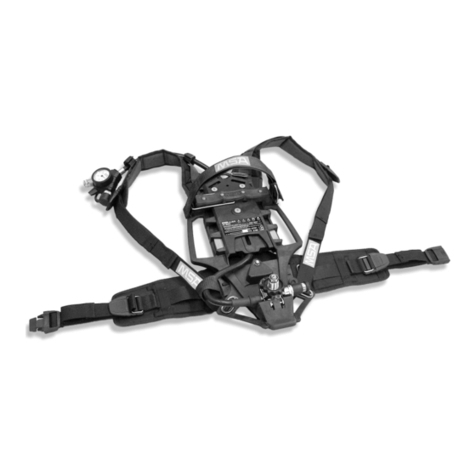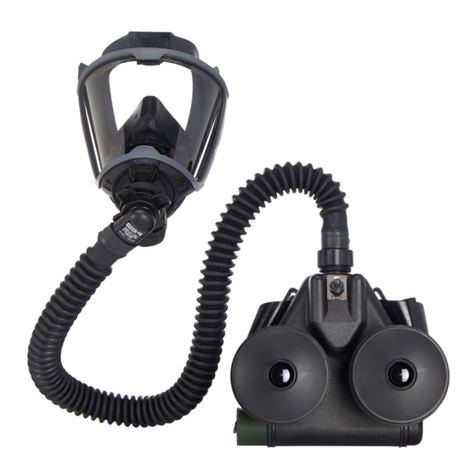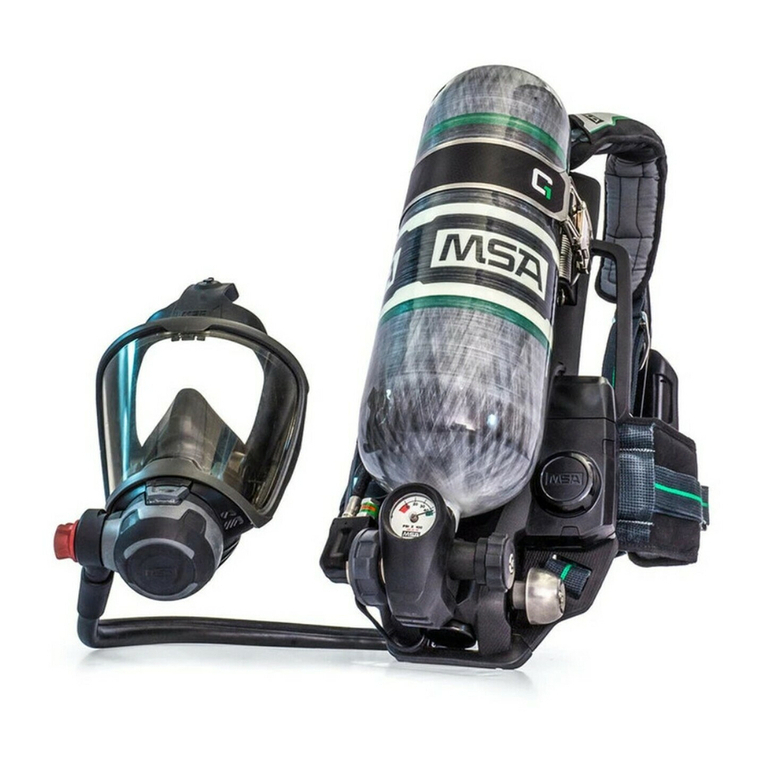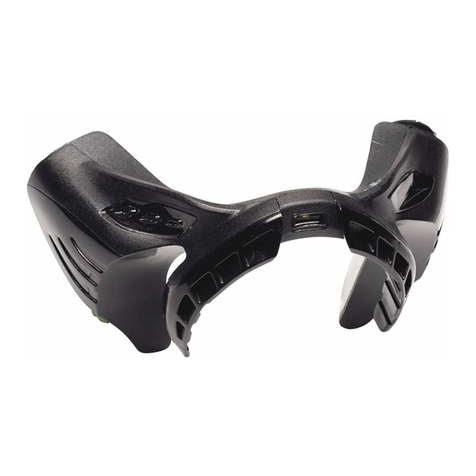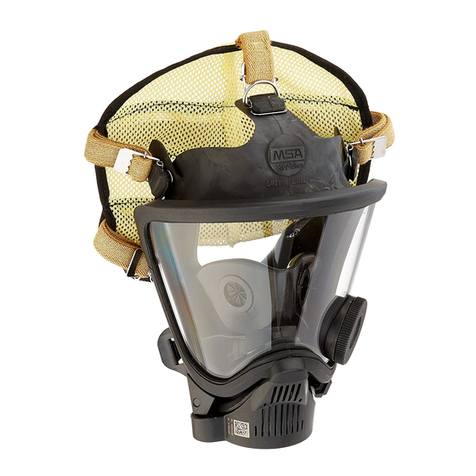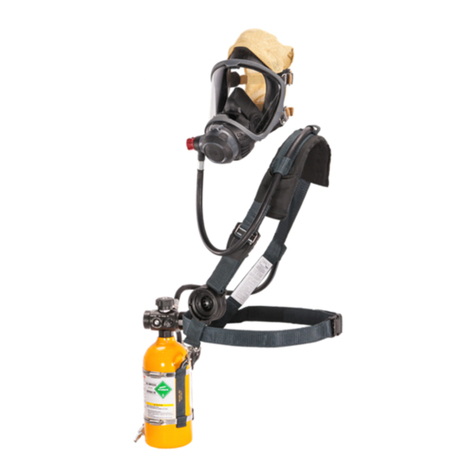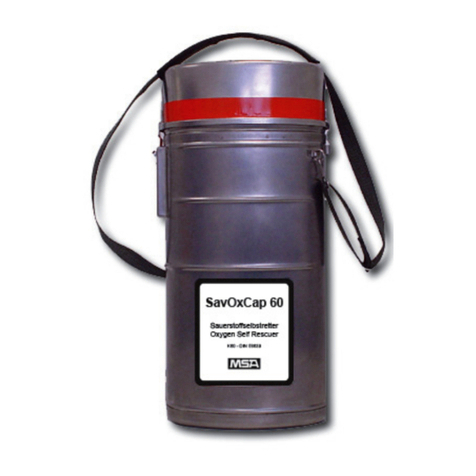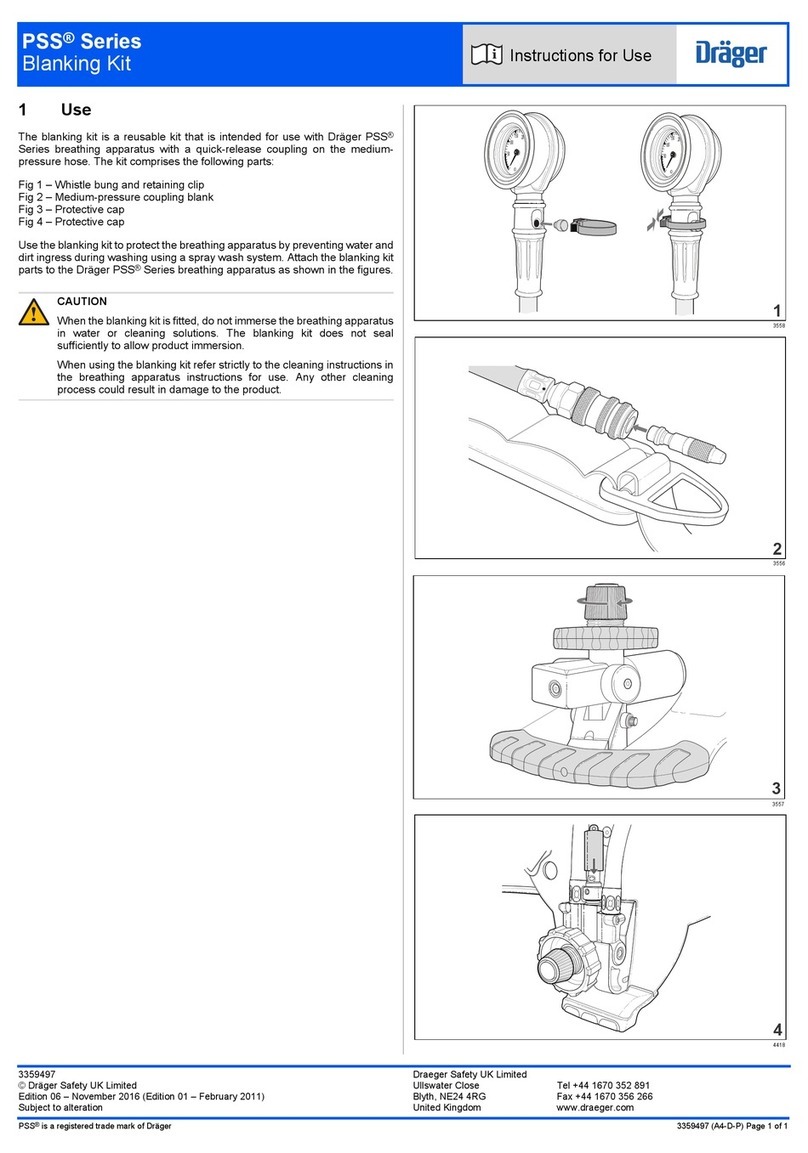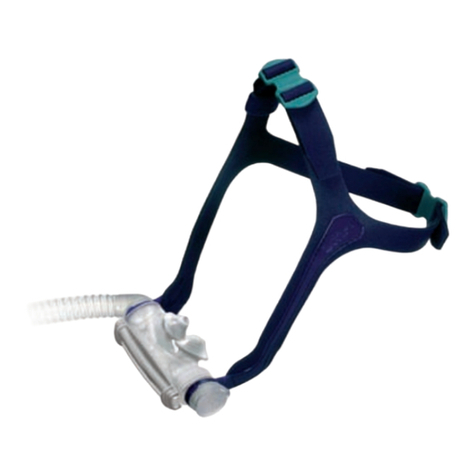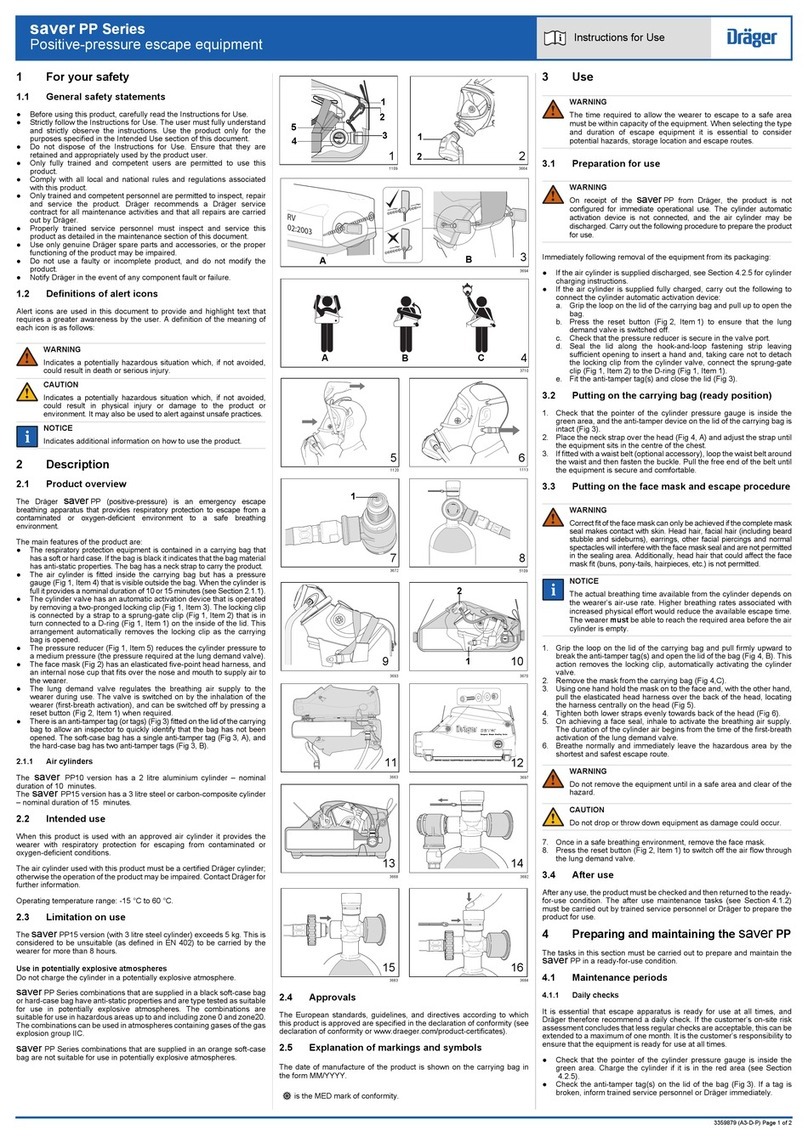
– Dizziness or other distress occurs.
– You taste or smell contaminant.
– You experience eye, nose or throat irritation.
• Use strictly in accordance with instructions, labels and limitations pertaining to this device.
• This respirator may not provide a satisfactory seal with certain facial characteristics, such a beards or large sideburns, that
prevent direct contact between the skin and the sealing surface of the facepiece. Do not use this respirator if such
conditions exist.
• Individuals who wear prescription glasses must use the spectacle kit to guarantee a correct fit. Ordinary prescription
glasses cannot be worn under the facepiece. See 8.3 Spectacle Kit.
• Never alter or modify this device.
• This respirator is for use by trained and qualified personnel only.
Failure to follow these warnings can result in serious personal injury or death.
WARNING!
• This respirator provides LIMITED protection. A respirator paired with an appropriate particulate filter may help reduce
exposure to airborne biological agents, including avian (bird) flu virus, other types of influenza, SARS, or other bacterial or
viral biological agents, but WILL NOT ELIMINATE the risk of exposure, infection, illness, or death.
• This respirator is certified by NIOSH to comply with the requirements specified for the designated filter efficiency level;
however, the government has NOT established a safe level of exposure to biological agents. Therefore, the respirator may
NOT prevent transmission of influenza virus.
• Refer to the Centers for Disease Control and Prevention (CDC) at www.cdc.gov for guidance on the use of respirators to
help decrease exposure to viral pathogens or other airborne biological agents in community, home, and occupational
settings. The CDC recommends fit testing, medical evaluations, and training for optimal effectiveness when a respirator is
used in a non-occupational setting. Neglecting these preparatory measures may cause an unsafe condition. Respirators
used in an occupational setting MUST be used in accordance with a complete respiratory protection program as required by
OSHA, which includes proper selection, training, fit-testing, and fit-checking. Detailed information on a respiratory
protection program is available by contacting OSHA or visiting www.osha.gov.
• Do NOT remove respirator in contaminated areas. The outer surface of the respirator MUST be treated as if it is
contaminated at all times. A respirator will NOT prevent one from exposure to the flu or other airborne biological agents in
other ways such as by touching the mouth, nose, or eyes with contaminated hands or objects. Biological agents, such as
the flu virus, can be transmitted when infected individuals cough or sneeze and spread virus particles through the air to
exposed surfaces which are touched. Tight-fitting safety goggles, or a full-facepiece respirator, may further help prevent
transmission of viral pathogens or other airborne biological agents.
• The CDC recommends frequent hand washing and wearing gloves to help prevent transmission of disease due to exposure
to surfaces where contaminants may be present, and also immediately following removal of the respirator.
• Do not share filter cartridges between users.
• This respirator is NOT for use by
a) children or
b) people with a medical condition that may be adversely affected by using it.
• This respirator is equipped with an exhalation valve. Exhaled air from the user passes, unfiltered, through the exhalation
valve and into the surrounding environment. Do not use where a sterile field is required.
• Test for Tightness before use. If a leak is detected, refer to 5.4 Testing the Negative Pressure Seal (Face-to-Facepiece
Seal) in this manual for further instructions.
6 OptimAir® MM PAPR
1 Introduction US




